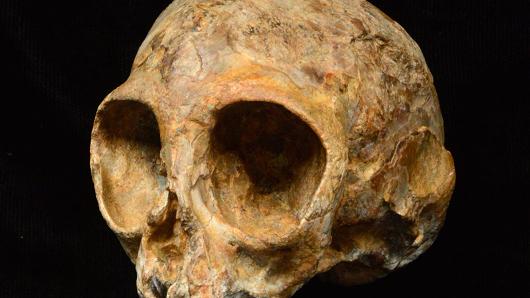Rare 13-Million-Year-Old Primate Skull Discovered in Kenya
A group of scientists have found what appears to be the most intact fossilized primate skull ever discovered in Kenya
The finding could shed light on the common evolutionary heritage shared by apes and humans. The skull was found in Kenya by an international team of researchers and is thought to belong to the Miocene era, a time when many species of ape arose in Africa, including ancestors of both modern apes and us, humans.
The skull could give scientists insights into what the ancestors looked like.
Moreover, the fossil belongs to the Nyanzapithecus alesi species, bears resemblance to the modern-day gibbons, and possesses features that can only be seen in apes, such as the teeth. Even so, there are certain features that distinguish it from the modern gibbons, suggesting that it was a completely different type of animal.
Fred Spoor, University College London, said that “Gibbons are well known for their fast and acrobatic behavior in trees,” and added that “the inner ears of Alesi show that it would have had a much more cautious way of moving around.”
To take a look inside the skull, the team of researchers used a sensitive form of 3-D X-ray. It revealed information that made them come to the conclusion that the skull belonged to an infant that was one to four months old when he passed away. They also found volcanic ash around the fossil, suggesting that it may have died during an eruption. However, researchers are not sure.
It is estimated that the Miocene period produced more than 40 different species of hominoids (superfamily of primates that includes apes, humans and related ancestral species).







